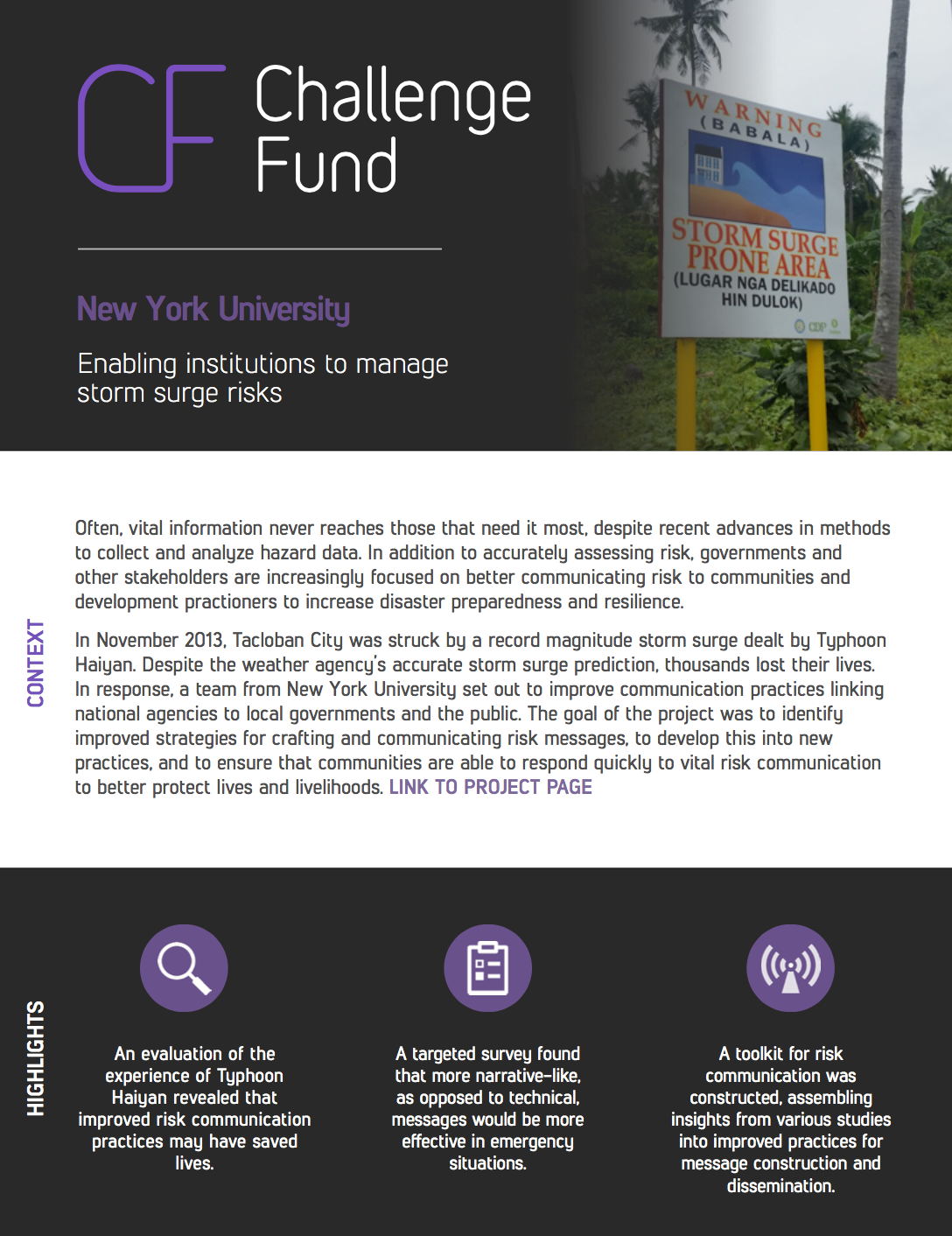Often, vital information never reaches those that need it most, despite recent advances in methods to collect and analyze hazard data. In addition to accurately assessing risk, governments and other stakeholders are increasingly focused on better communicating risk to communities and development practitioners to increase disaster preparedness and resilience.
In November 2013, Tacloban City was struck by a record magnitude storm surge dealt by Typhoon Haiyan. Despite the weather agency’s accurate storm surge prediction, thousands lost their lives. In response, a team from New York University set out to improve communication practices linking national agencies to local governments and the public. The goal of the project was to identify improved strategies for crafting and communicating risk messages, to develop this into new practices, and to ensure that communities are able to respond quickly to vital risk communication to better protect lives and livelihoods.

